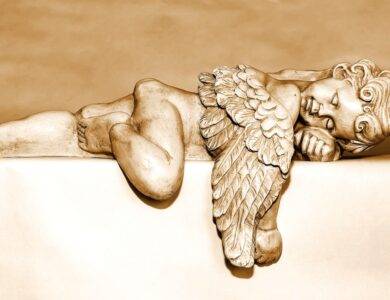
Watching your loyal canine companion as they sleep, you might have noticed them twitching, moving their paws, or even emitting soft barks. These observations naturally lead to an intriguing question: “Do dogs experience dreams in a way similar to humans?” This query not only draws us closer to our pets but also drives scientific inquiry into understanding the complex inner lives of dogs.
Like their human counterparts, dogs undergo various stages of sleep, notably including the REM (Rapid Eye Movement) stage, which is closely associated with the phenomenon of dreaming. In this stage, it’s common to see signs in your dog such as eye movements under closed eyelids, twitching limbs, or even quiet barking and whimpering. These actions suggest that dogs, indeed, might be in the midst of a dream.
The content of a dog’s dream, though a mystery, is thought to be similar to human dreams. Research indicates that dogs likely dream about their daily experiences. Imagine them dreaming about chasing their favorite ball, enjoying a leisurely walk, or moments of affection with their human family. This reflects the idea that dogs, known for their emotional depth, might process and ‘relive’ their day-to-day joys, excitements, and even routine events in their dreams.
The Science Behind Canine Dreams
Understanding the science behind canine dreams takes us into the intriguing workings of a dog’s mind and sleep behavior. Dogs, like humans, have a complex brain structure that facilitates dreaming during sleep. The brain activity in dogs during the REM (Rapid Eye Movement) phase of sleep is remarkably similar to that in humans. This phase is characterized by more brain activity and is where most dreaming occurs.
But what’s truly fascinating is the concept of ‘neural replay’ in dogs. Research in neuroscience suggests that during sleep, animals, including dogs, replay or reprocess their experiences from the day. This phenomenon is essential for memory consolidation and learning. So when your dog is chasing rabbits in their dreams, they might actually be processing and learning from their daytime experiences.
Studies have shown that smaller dog breeds tend to dream more frequently than larger breeds. This might be related to their faster metabolism, which could influence the speed and frequency of brain activity. On the other hand, larger dogs might have longer, but less frequent dreams. This diversity in dreaming patterns across breeds
Connecting with Our Dreaming Dogs
Recognizing that dogs dream not only satisfies our curiosity but also enhances the bond we share with them. By acknowledging their dream states, we can relate to our pets in a more empathetic and understanding manner. Just like us, dogs need an uninterrupted, peaceful sleep for their mental and emotional well-being. It’s important to provide them with a comfortable sleeping environment that supports their natural sleep cycles.
Respect for their dream state is crucial. Disturbing a dog during REM sleep can be disorienting for them, potentially leading to confusion or defensive behavior. It’s similar to how we might react when jerked awake from a deep dream. Understanding this can encourage us to be more considerate and gentle when we need to wake our sleeping dogs.
Moreover, observing our dogs’ sleeping habits and dream behaviors can be an indicator of their mental health. Excessive twitching, yelping, or sleep disturbances could be a sign of stress or discomfort. This awareness allows us to be more attuned to their needs and well-being, ensuring they lead happy, healthy lives.
Conclusion: Embracing the Dreaming Canine World
In conclusion, the question “Do dogs dream?” opens up an intriguing world of possibilities about the emotional and cognitive lives of our pets. As we continue to learn about their dreaming habits, we grow closer to understanding and appreciating the complexity of their inner world. So, the next time you see your dog twitching in their sleep, smile at the thought that they might be reliving their happiest moments with you, in a dreamland where every tail wag and ball chase is a joyful adventure.
